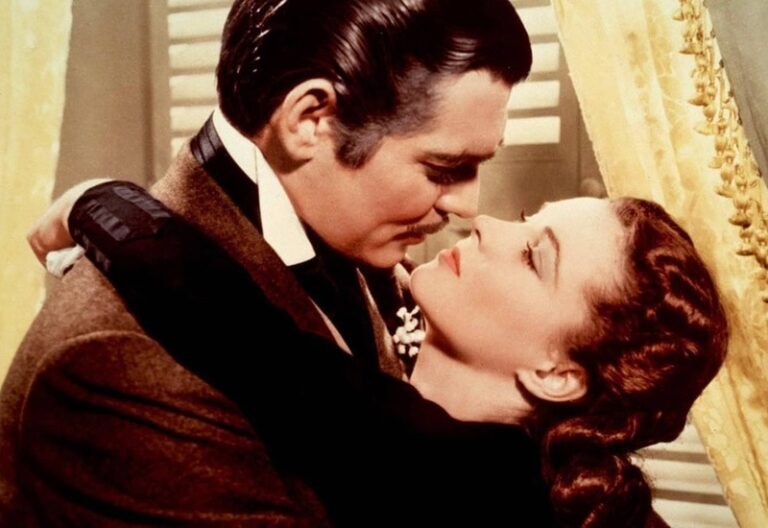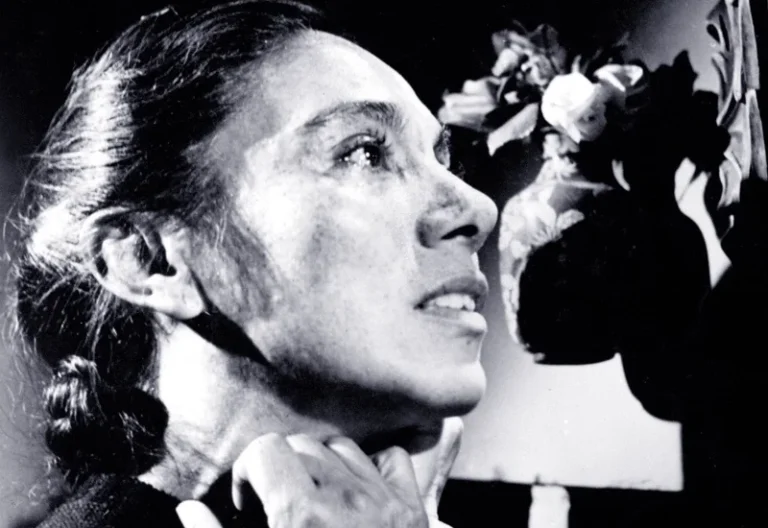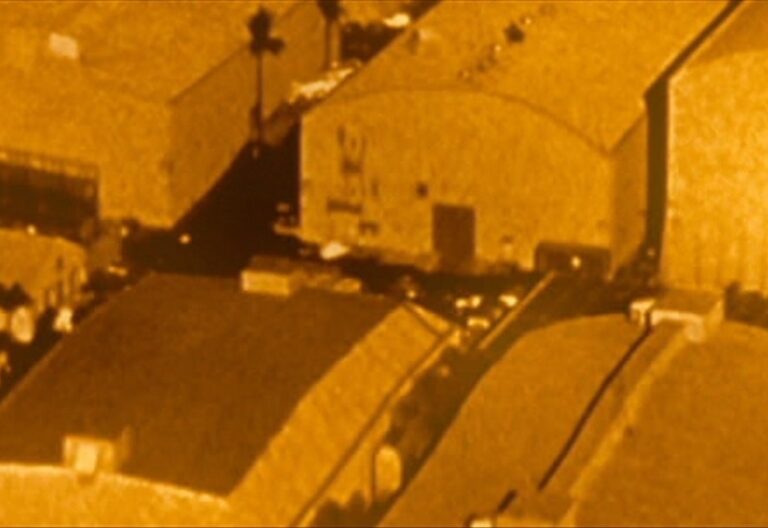the hollywood blacklist - the era of fear
The Hollywood blacklist was a period of intense scrutiny and persecution in the American film industry during the late 1940s and 1950s. This era was marked by the fear of communist influence, paranoia, and the suppression of dissenting voices. The blacklist, while unofficial, was a de facto ban on individuals who were suspected of having communist ties or sympathies, preventing them from finding work in Hollywood.
Published by: CinemaWaves Team | Filed Under: Film Blog
Origins and Context
The origins of the Hollywood blacklist lie in the broader context of the Cold War and the rise of anti-communist sentiment in the United States. After World War II, the Soviet Union emerged as a global superpower, and the ideological battle between capitalism and communism intensified. In the United States, this led to a widespread fear of communist infiltration, known as the Red Scare. The federal government, along with various organizations and individuals, took steps to identify and neutralize perceived communist threats.
One of the most prominent bodies involved in this effort was the House Un-American Activities Committee (HUAC). Established in 1938, HUAC initially focused on investigating Nazi sympathizers but shifted its attention to communists during the Cold War. The committee believed that communists had infiltrated various sectors of American society, including the entertainment industry, to spread propaganda and subvert American values.

The 1947 HUAC Hearings
In 1947, HUAC turned its focus to Hollywood, summoning a series of high-profile figures to testify about their political beliefs and associations. The committee’s actions were driven by the belief that the film industry, with its vast reach and influence, could potentially be used to spread communist ideology. The hearings garnered significant public attention, as they were broadcast on radio and television.
A key moment in the HUAC hearings came with the appearance of a group known as the “Hollywood Ten.” This group consisted of screenwriters, directors, and producers who refused to answer the committee’s questions about their alleged communist affiliations. They argued that the questioning violated their First Amendment rights, specifically the freedom of speech and association. Their refusal to cooperate led to contempt of Congress charges, and all ten were blacklisted from working in Hollywood. The members of the Hollywood Ten included:
1. Alvah Bessie – Screenwriter
2. Herbert Biberman – Director
3. Lester Cole – Screenwriter
4. Edward Dmytryk – Director
5. Ring Lardner Jr. – Screenwriter
6. John Howard Lawson – Screenwriter
7. Albert Maltz – Screenwriter
8. Samuel Ornitz – Screenwriter
9. Adrian Scott – Producer
10. Dalton Trumbo – Screenwriter

In the aftermath of the 1947 HUAC hearings, 48 prominent Hollywood executives gathered at the Waldorf-Astoria Hotel and issued the Waldorf Statement, declaring that studios would not employ anyone associated with the Communist Party or who refused to testify before HUAC. This informal agreement, known as the Hollywood blacklist, extended beyond the Hollywood Ten and affected hundreds of industry professionals, many of whom were not actual communists but were suspected of having leftist sympathies or associations with progressive causes.
The Hollywood blacklist had severe consequences for those affected, leading to ostracization, financial hardship, and even exile from the industry. Many blacklisted individuals moved abroad or wrote under pseudonyms, using “fronts” to continue working. The blacklist’s impact extended beyond the directly targeted individuals, stifling artistic expression and fostering a climate of fear and self-censorship in the broader creative community. As a result, studios became cautious, avoiding controversial or politically subversive topics, which led to a more sanitized and restrained film industry.

Important films associated with Hollywood Ten
During the Hollywood blacklist era, several notable films emerged, either directly addressing the political climate or indirectly reflecting the tensions of the time. Some were created by blacklisted artists working under pseudonyms or in secret, while others were made by filmmakers who took a stand against the blacklist. Here are some key films associated with this period:
“High Noon” (1952) is often interpreted as an allegory for the Hollywood blacklist and the broader climate of fear and cowardice during the McCarthy era. Directed by Fred Zinnemann and written by Carl Foreman, who was later blacklisted, the film tells the story of a town marshal who stands alone to face a group of outlaws. The narrative can be seen as a critique of those who failed to stand up against the injustices of the blacklist.
“On the Waterfront” (1954) directed by Elia Kazan and written by Budd Schulberg, is another film discussed in the context of the Hollywood blacklist. Kazan had controversially named names before HUAC, and the film’s story of a dockworker standing up against corruption has been interpreted by some as a defense of his actions. The film won eight Academy Awards, including Best Picture and Best Actor for Marlon Brando.
“Roman Holiday” (1953) a romantic comedy, directed by William Wyler and starring Audrey Hepburn and Gregory Peck, is notable for being written by Dalton Trumbo, one of the Hollywood Ten. Due to the blacklist, Trumbo could not receive credit for his work. Instead, Ian McLellan Hunter, a front writer, took the official screenwriting credit. Trumbo’s involvement was not publicly acknowledged until years later, and he eventually received a posthumous Oscar for the screenplay.
“The Bridge on the River Kwai” (1957) anti-war film, directed by David Lean, another example where a blacklisted writer’s work was not initially credited. The screenplay was written by Carl Foreman and Michael Wilson, both of whom were blacklisted. Pierre Boulle, the author of the original novel who did not speak English, was credited with the screenplay and won the Academy Award. In 1984, Foreman and Wilson were posthumously awarded the Oscar.
“Salt of the Earth” (1954) was an independently produced film directed by Herbert J. Biberman, one of the Hollywood Ten, and written by Michael Wilson. The film is notable for its progressive portrayal of labor strikes and gender equality, focusing on a Mexican-American miners’ strike in New Mexico. Due to its perceived communist sympathies, the film was widely boycotted, and its creators faced significant opposition. Despite this, it has since gained recognition as a significant work of American cinema.
The Decline of the Blacklist
By the late 1950s and early 1960s, the power of the Hollywood blacklist began to decline due to shifting political climates, changing public opinion, and increasing legal challenges. The turning point came in 1960 with the release of “Spartacus,” when Kirk Douglas publicly credited Dalton Trumbo as the screenwriter, defying the industry’s blacklist rules. This was followed by Otto Preminger’s decision to credit Trumbo for “Exodus,” further weakening the blacklist’s grip.
In the years that followed, more blacklisted individuals were able to return to work openly. Dalton Trumbo, for example, received public recognition and awards for his contributions, including an Academy Award for “The Brave One” and restored credit for “Roman Holiday.” This marked a significant reversal in the blacklist era and a return to creative freedom for many in the industry.
Legacy of the Hollywood
Blacklist era
The Hollywood blacklist stands as a dark chapter in American history, illustrating the dangers of political persecution. It is remembered for silencing voices, destroying careers, and creating a climate of fear and conformity. However, it also highlights the resilience of those who continued to work under extreme conditions and at great personal risk.
In recent years, efforts have been made to address the injustices of the blacklist era. For instance, in 1999, the Writers Guild of America officially credited the blacklisted writers of “The Bridge on the River Kwai” and other films. This period serves as a reminder of the importance of protecting civil liberties and maintaining vigilance to uphold free speech and artistic freedom, even during times of political tension.
Refer to the main page for more educational insights on filmmaking and cinema history.
Pre-Code Hollywood is a period in the American film industry between the widespread adoption of sound in 1929 and the enforcement of the Motion Picture Production Code, known…
In the early 20th century, a cinematic revolution was brewing in the Soviet Union. A group of visionary filmmakers, collectively known as the Soviet Montage School, gathered to redefine…
At New Mexico’s Empire Zinc mine, Mexican-American workers protest the unsafe work conditions and unequal wages compared to their Anglo counterparts. Ramon Quintero…
Film theory is the academic discipline that explores the nature, essence, and impact of cinema, questioning their narrative structures, cultural contexts, and psychological…
Film noir emerged in the early 1940s as a distinctive style within American cinema, marked by its dark, moody aesthetics and cynical narratives. The term “film noir” meaning…
The studio system was a dominant force in Hollywood from the 1920s to the 1950s. It was characterized by a few major studios controlling all aspects of film production…






